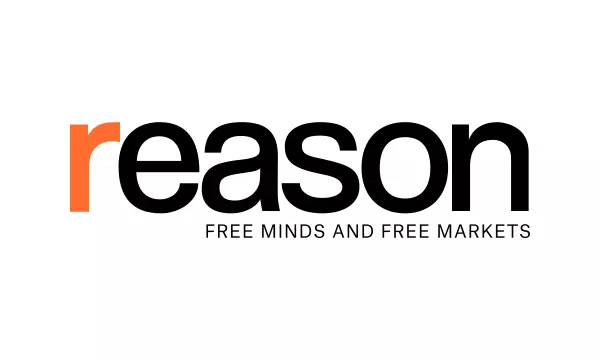Millions of people were abducted from west Africa and forcibly trafficked to the Americas over the 400 years of the transatlantic slave trade, from the 15th to the 19th century.
Slavery treated these people as forms of property. It forced them, with brutal violence, to work on plantations producing commodities such as cotton and coffee, sugar and tobacco. Their labour powered the world economy for several centuries.
While common understanding of this history has improved, less frequently remembered are those who spearheaded resistance against slavery. Revolutionary uprisings led by enslaved people themselves, as well as actions by radical groups such as Quakers and mutinous pirates, challenged slavery long before William Wilberforce and Britain’s abolition movement.
Now, an increasingly popular genre of the graphic novel is building public awareness and memory of these movements. Composing its stories of the past from framed documents, fragmented images and scraps of text, the form of the graphic novel resembles an archive. It is therefore well-placed to bring forgotten histories to life and to reflect on how those histories were recovered.
Looking for something good? Cut through the noise with a carefully curated selection of the latest releases, live events and exhibitions, straight to your inbox every fortnight, on Fridays. Sign up here.
Here are three recent graphic novels that can help us to remember resistance against slavery. They follow in the footsteps of historian Rebecca Hall’s collaboration with artist Hugo Martínez, Wake: The Hidden History of Women-Led Slave Revolts (2021), which I would also strongly recommend.
1. Toussaint Louverture: The Story of the Only Successful Slave Revolt in History
By C.L.R. James, Nic Watts, and Sakina Karimjee (2023)
In the early 1930s, the anti-colonial historian, C.L.R. James, wrote a play about the 1791 Haitian Revolution and its leader, Toussaint Louverture.
It dramatised the story of the only successful slave revolt in history, when 100,000 slaves rose up against their white masters and eventually secured independence after almost 15 years of struggle.
James’s play was performed only twice in 1936, with the great African American actor Paul Robeson in the title role. The script was then lost for several decades, until 2005, when the historian Christian Høgsberg discovered a copy in the archives at the University of Hull and published a new edition of the play.
In 2012, graphic artist, Nic Watts and theatre practitioner, Sakina Karimjee, decided to bring James’s play back to life – not on the stage, but in the pages of a graphic novel.
James, who died in 1989, might not have guessed that he would one day be a co-creator of a graphic novel. But he would surely have been impressed with Toussaint Louverture, which takes readers through the Haitian Revolution in almost 300 thrilling pages.
The graphic novel uses its uniquely spatial medium to map the connections between the French Revolution, which proclaimed universal rights for all men, and the slave uprising in Haiti, which sought to realise those rights in France’s colonies. It is packed with powerful symbols and imagery that build a rich picture of the strategies and tactics that led to the uprising’s eventual victory.
2. Prophet Against Slavery: Benjamin Lay, A Graphic Novel
By David Lester, edited by Paul Buhle and Marcus Rediker (2023)
Historian Marcus Rediker has devoted his career to uncovering early histories of resistance against slavery and sharing them in compelling and accessible formats.
In 2021 he teamed up with the illustrator, David Lester, and longtime graphic historian, Paul Buhle, to translate this work into graphic novels.
The first, Prophet Against Slavery, takes readers back to a Quaker meeting house in the early 1700s. In its dramatic opening scene, Benjamin Lay disrupts the meeting with a piece of performance theatre. He appears to stab his own arm in protest against slavery, though we later learn that the spouting blood was in fact “red pokeberry juice”.
Lay was an innovator of performance protest, and he developed the strategy of boycotting commodities produced by slave labour. As Prophet Against Slavery details, he was one of the earliest and most outspoken abolitionists, campaigning for the end of the transatlantic slave trade almost a century before Wilberforce.
He was also a pioneer of veganism and an advocate for animal rights. Lay saw the parallels between early capitalism’s enclosure of common land in England and slavery’s enclosure of people’s bodies in the US. The claustrophobic borders of Lester’s graphic novel dramatise these acts of property making, even as they document Lay’s stubborn attempts to liberate the oppressed from bondage.
The enslaved themselves do not have a voice in Prophet Against Slavery. But Lester uses powerful charcoal sketches and image-only panels to make sure their presence is never forgotten.
These haunting images remind readers of the human cost of slavery without presuming to speak for those whose voices have been excluded from the written archive.
3. Under the Banner of King Death: Pirates of the Atlantic, A Graphic Novel
By David Lester and Marcus Rediker (2023)
Rediker and Lester teamed up again for Under the Banner of King Death. The title refers to the skull and cross bones flag that flies on the masts of pirate ships.
But this is not your conventional story of evil pirates drinking rum and hunting for gold (although there is some of that). It is rather a portrait of the pirate ship as a space of self-determination and political freedom at a time when, as Rediker puts it, “poor people had no democratic rights anywhere in the world”.
The graphic novel tells the story of John Gwin, an African-American man who escaped from slavery in South Carolina. After being kidnapped by the Royal African Company to labour on a slaving ship, he decides to resist. He rallies his shipmates, liberates the Africans below deck, and leads a mutiny to overthrow Skinner, the tyrannical captain.
With Skinner deposed, the pirates establish a commune at sea: “A world turned upside down,” as Gwin calls it. “All captains and officers elected. All tars [sailors] treated as brothers. No tyranny of the lash.” There is no hierarchy on this ship. Instead, they return to west Africa and begin breaking people out of slave castles along the coast.
Lester’s pen-and-ink sketches and frantic page layouts capture the scattergun nature of pirate life in the 17th century. It was a dangerous existence. Such was the threat posed by pirates to the ruling order that the British Navy worked quickly to capture them and make an example. Under the Banner of King Death starts and ends with hanging scenes, where pirates were put to death in public.
But while the British state could hang the pirates, it couldn’t kill their idea of freedom from slavery. Lester and Rediker recover this history and remind us of the revolutionary spirit that the skull and cross bones flag once represented.
These graphic novels commemorate new histories of resistance to the slave trade, while also reminding us of the historiographic work that must be put into recovering and retelling them, now and in the future.
Dominic Davies does not work for, consult, own shares in or receive funding from any company or organisation that would benefit from this article, and has disclosed no relevant affiliations beyond their academic appointment.
This article was originally published on The Conversation. Read the original article.







